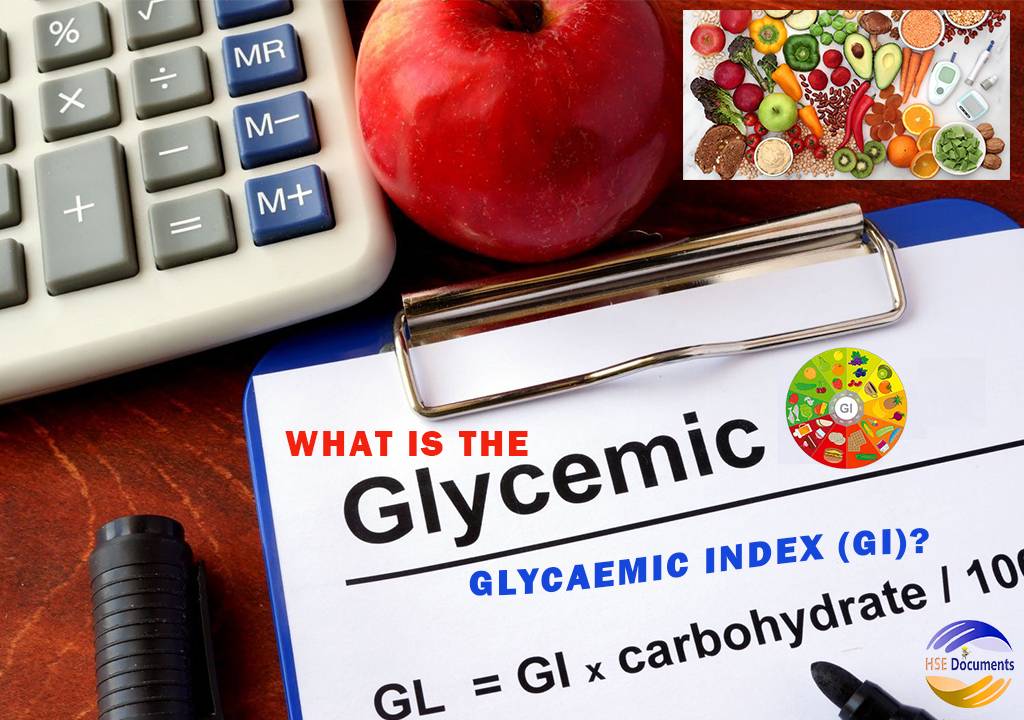
Demystifying Glycemic Index vs. Glycemic Load: A Simple Guide
Navigating the subject of nutrition may be confusing, with so many terms and notions thrown around. The words “Glycemic Index (GI)” and “Glycemic Load (GL)” are sometimes used interchangeably. These phrases are related to how different foods affect our blood sugar levels, yet they are independent ideas with major health implications. In this comprehensive tutorial, we will simplify and clarify Glycemic Index and Glycemic Load, providing you with practical insights to make smart dietary decisions.
Understanding Blood Sugar Regulation
Before we go into the Glycemic Index and Glycemic Load, it’s important to understand how our bodies control blood sugar (glucose). Blood sugar is our cells’ principal source of energy, and it must be kept within a relatively restricted range to sustain maximum health.
– Insulin: The hormone insulin plays a central role in regulating blood sugar. When we consume carbohydrates (sugars and starches), our bodies break them down into glucose, which enters the bloodstream. In response, the pancreas releases insulin, which helps transport glucose from the bloodstream into cells for energy or storage.
– Blood Sugar Levels: After eating, blood sugar levels rise, prompting the release of insulin to lower them. Between meals or during periods of fasting, blood sugar levels should remain stable to provide a constant energy supply to cells.
– Impact of Carbohydrates: Carbohydrates have the most significant influence on blood sugar levels. Different carbohydrates affect blood sugar differently, depending on their composition and how quickly they are digested and absorbed.
Now, let’s explore how Glycemic Index and Glycemic Load come into play when considering the impact of carbohydrates on blood sugar.
Omega 3 by Dr Spages
Dr Spages have crafted our Omega-3 using a blend of fish oil and purified water.
DELIGHTFUL LEMON FLAVOR: Say goodbye to that unpleasant Omega aftertaste with Dr Spages naturally flavored Omega-3 featuring a refreshing lemon taste.
EASE OF CONSUMPTION: Their liquid capsules are designed for easy swallowing.
ADVANCED PURE OMEGA: Dr Spages formula contains the optimal amounts of EPA (800 mg) and DHA (600 mg) Omega Fish Oil to help combat inflammation. Fish Oil supports heart health, brain function, bone strength, joint mobility, and overall well-being, contributing to reduced joint inflammation.
Purchase a package of 2 and receive an extra 10% discount, or opt for a package of 3 to enjoy an additional 15% off.
Glycemic Index (GI)
What is Glycemic Index?
The Glycemic Index (GI) is a numerical scale that classifies carbohydrates in foods according to how quickly and severely they elevate blood sugar levels when ingested alone. High GI foods are swiftly digested and absorbed, resulting in a sudden surge in blood sugar, whereas low GI foods are digested more slowly, resulting in a gradual and modest increase in blood sugar.
How is GI Measured?
The GI of a particular food is determined through clinical testing. Here’s a simplified explanation of the process:
- Fasting: Participants in a clinical trial begin with an overnight fast to ensure their baseline blood sugar levels are stable.
- Consumption: They consume a portion of the test food containing 50 grams of carbohydrates.
- Blood Sugar Monitoring: Blood sugar levels are measured at specific time intervals (usually over a 2-hour period) after consuming the food.
- Comparison to Glucose: The results are compared to a reference food (usually pure glucose or white bread) to calculate the GI value. Glucose is assigned a GI value of 100, and other foods are ranked relative to it. I am not a fan of this because you inflame your body to do this test. That could take 6 weeks to come down.
GI Categories:
– Low GI (0-55): Foods with a low GI are digested and absorbed slowly, resulting in a gradual increase in blood sugar. These foods help maintain stable energy levels and can be particularly beneficial for people with diabetes.
– Medium GI (56-69): Foods in this range have a moderate impact on blood sugar levels and are typically considered acceptable in moderation.
– High GI (70+): High GI foods cause a rapid spike in blood sugar and should be consumed in moderation. These foods may lead to energy crashes and increased hunger shortly after consumption.
Glycemic Load (GL)
What is Glycemic Load?
Glycemic Load (GL) builds upon the concept of Glycemic Index by taking into account both the quality (GI) and quantity of carbohydrates in a portion of food. It provides a more accurate picture of how a specific serving of food affects blood sugar levels because it considers not only how fast the carbohydrates are digested but also the total amount of carbohydrates consumed.
How is GL Calculated?
The formula for calculating Glycemic Load is relatively simple:
Glycemic Load (GL) = (GI x Amount of Carbohydrates in a Portion) / 100
In other words, GL combines the GI of a food with the number of carbohydrates in a portion, adjusting for portion size. The resulting value is a more practical measure of how a specific amount of food will impact blood sugar.
GL Categories:
– Low GL (0-10): Foods with a low GL have a minimal impact on blood sugar and are generally considered favorable choices for overall health.
– Medium GL (11-19): Foods in this range have a moderate impact on blood sugar and can be part of a balanced diet when consumed in moderation.
– High GL (20+): High GL foods can cause a significant spike in blood sugar when consumed in substantial quantities. These foods should be consumed sparingly and balanced with low and medium GL options.
Key Differences: Glycemic Index vs. Glycemic Load
Now that we’ve established what Glycemic Index and Glycemic Load are, let’s highlight the key differences between these two concepts:
- Definition:
– Glycemic Index (GI): GI ranks foods based on how quickly they raise blood sugar when consumed in isolation, regardless of the portion size.
– Glycemic Load (GL): GL considers both the quality (GI) and quantity of carbohydrates in a portion of food, providing a more practical assessment of its impact on blood sugar.
- Focus:
– Glycemic Index (GI): GI focuses solely on the quality of carbohydrates, ranking foods as low, medium, or high based on their GI values.
– Glycemic Load (GL): GL provides a more holistic view by considering both the quality (GI) and quantity of carbohydrates, allowing for a more accurate assessment of a food’s impact on blood sugar.
- Portion Consideration:
– Glycemic Index (GI): GI does not take portion size into account. It assumes a standard quantity of carbohydrates (usually 50 grams) in each tested food.
– Glycemic Load (GL): GL adjusts for portion size, allowing for a more practical assessment of how a specific serving of food affects blood sugar.
- Interpretation:
– Glycemic Index (GI): Foods with a low GI are considered preferable for maintaining stable blood sugar levels. However, it does not account for portion size, which can be misleading.
– Glycemic Load (GL): GL provides a more practical assessment of how a typical serving of food affects blood sugar. It considers both the quality and quantity of carbohydrates, making it a more accurate tool for dietary planning.
Practical Implications
Understanding the difference between Glycemic Index and Glycemic Load can empower you to make informed dietary choices. This will not fix why your blood sugar is high but a basic understanding of eating. Here are some practical implications of both concepts:
Glycemic Index (GI):
– Choosing Quality Carbohydrates: Opt for foods with a low GI when you want to prioritize slow, steady energy release and better blood sugar control. Examples include non-starchy vegetables, and most fruits.
– Immediate Blood Sugar Impact: GI can be helpful when you need to manage blood sugar shortly after a meal or snack , such as for individuals with diabetes.
– Use as a General Guideline: GI can serve as a general guideline for making healthier carbohydrate choices. However, remember that portion size is not considered.
Glycemic Load (GL):
– Considering Portion Size: GL provides a more accurate assessment of how a specific portion of food affects blood sugar. It helps you understand that even high-GI foods may have a modest impact when consumed in reasonable quantities.
– Balanced Dietary Planning: GL is valuable for overall dietary planning because it accounts for both the quality and quantity of carbohydrates in a meal. It encourages balanced eating patterns.
– Practical Application: GL can guide you in creating balanced meals by incorporating foods with varying GL values. It promotes a sustainable approach to managing blood sugar.
Examples of GI and GL in Common Foods
Let’s explore some examples to illustrate the difference between GI and GL:
Example 1: Watermelon
– Glycemic Index (GI): Watermelon has a high GI, typically around 72. This might suggest that it rapidly raises blood sugar levels.
– Glycemic Load (GL): However, a typical serving of watermelon contains relatively few carbohydrates. As a result, its GL is relatively low, around 4. This means that while watermelon has a high GI, it has a modest impact on blood sugar when you consider portion size.
Example 2: Brown Rice
– Glycemic Index (GI): Brown rice has a moderate GI, around 50-55. This indicates a moderate impact on blood sugar.
– Glycemic Load (GL): When you account for a typical serving size of brown rice, its GL remains moderate. Brown rice can be part of a balanced meal without causing significant blood sugar spikes.
Example 3: Popcorn
– Glycemic Index (GI): Popcorn has a relatively low GI, often around 55. This suggests it has a slower and steadier impact on blood sugar.
– Glycemic Load (GL): The GL of popcorn varies depending on portion size. A small serving of popcorn can have a low GL, while a large serving might have a higher GL. This illustrates the importance of portion consideration when assessing GL.
Practical Tips for Using GI and GL
To incorporate GI and GL into your dietary choices, consider the following practical tips:
- Focus on Whole Foods:
Whole, unprocessed foods like vegetables, fruits that generally have lower GI and GL values. Vegetables are excellent choices for stable blood sugar control.
- Combine Foods:
Pairing high-GI foods with low-GI foods can help balance blood sugar response. For example, adding vegetables to a high-GI meal can slow down the absorption of carbohydrates.
- Watch Portion Sizes:
Keep portion sizes in mind when considering GL. Even foods with a low GI can have a significant impact on blood sugar if consumed in large quantities.
- Individual Responses Vary:
Remember that individual responses to carbohydrates can vary. Factors like genetics, activity level, and overall diet play a role in how your body processes carbohydrates.
- Use GI and GL as Tools, Not Rigid Rules:
While GI and GL can be helpful guides, they are not the only factors to consider in a healthy diet. A balanced diet includes a variety of nutrients from different food groups.
Conclusion
Glycemic Index (GI) assesses foods based on how rapidly they elevate blood sugar, whereas Glycemic Load (GL) takes into account both the quality and quantity of carbs in a serving of food. Both approaches provide useful information for controlling blood sugar levels and making smart food decisions.
Understanding GI and GL allows you to adjust your diet to match your unique needs, whether you want to maintain stable energy levels, manage diabetes, or simply eat a balanced and wholesome diet. Remember that a holistic approach to nutrition takes into account not only GI and GL but also the overall quality of your food, portion sizes, and individual factors that influence how your body reacts to carbohydrates.
Please Note: The diet and watching carbs DOES NOT fix the root issues that make blood sugar go up. To learn more or see if you can become a patient please visit www.drjspages.com/apply










